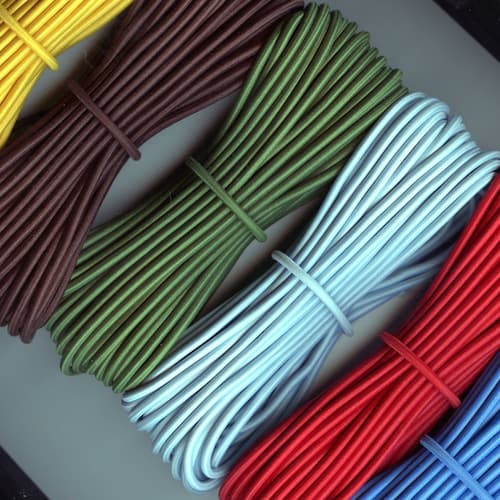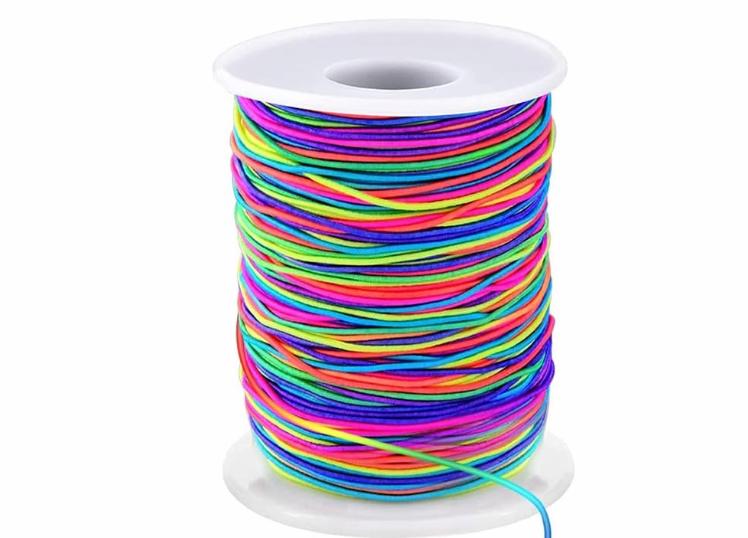Choosing the right string for a beaded bracelet might seem like a simple task, but it's an essential decision that impacts both the design and durability of your accessory. From the sleekness of silk to the strength of nylon, each type of string carries its unique properties and suitability for different bead materials and bracelet designs. In this article, we will explore the various types of strings available for beaded bracelets, guide you on how to select best string for beaded bracelets for your project, and conclude with key takeaways to ensure your beaded bracelet not only looks fantastic but lasts.

When it comes to crafting beaded bracelets, the choice of string can make a significant difference in both the appearance and longevity of your creation. Here are some popular types of string used in beaded bracelet making:
Single Strand Rubber Cord: This popular type of stretch cord is round and rubbery, known for its reliability like the Stretchy Bracelet String. It comes in various sizes but can be slightly challenging to knot tightly. Surgeon's knots are recommended for security, often supplemented with a drop of glue. Ideal for large beads, it offers durability but requires extra care when knotting.

Stretch Floss: Made of multiple strands woven together, stretch floss offers good stretch memory and easier knotting compared to single-strand cords. Perfect for your adjustable string bracelets, this is available in limited colors and sizes, and it's suitable for smaller beads.
Polyester Cord with Elastic Core: This best cord for beaded bracelets features a polyester coating with an elastic core, this cord comes in various colors, including sparkles and metallics. Primarily used for visible applications like hair accessories, it can also string larger beads.
Selecting the correct size of string is essential for ensuring a comfortable fit and preventing the bracelet from being too loose or too tight. Here's how to determine the right size:
Selecting the best string for beaded bracelets is essential for their durability, comfort, and overall aesthetic appeal. Nylon thread and elastic cord offer excellent flexibility and strength, while options like waxed cotton cord, leather cord, and silk thread provide unique textures and styles to suit different designs.
When choosing the right size of string, consider factors such as bead size, wrist circumference, and knotting techniques to ensure a perfect fit. Whether you prefer the stretchiness of elastic cord or the natural look of waxed cotton or leather, there's a string option that's perfect for your beaded bracelet creation.
The string size for beaded bracelets depends on the hole size of the beads. Typically, 0.5mm to 1mm elastic cord suits most beads. Use 0.5mm for smaller beads with tiny holes, and 1mm for larger, heavier beads. Always ensure the cord can pass through the bead holes twice for secure knotting.
The length of a beaded bracelet string is usually decided by the wrist size, bead size, and bracelet design. Generally, start with a string about 12 inches, longer than the desired bracelet length, allowing for knotting and adjustments. This extra length accommodates the space beads occupy and any clasp or closure.
The strongest stretch cord for bead bracelets is typically made from elastic silicone. A popular choice is 1mm thick clear stretch magic cord, known for its high tensile strength and excellent elasticity. It’s durable, can handle heavier beads, and is less likely to fray or break with regular use.
Learn step-by-step techniques on how to finish a loom beaded bracelet effortlessly. Explore expert tips and tricks for perfecting your beadwork.
Read MoreDo copper bracelets turn skin green? Unfortunately yes. Explore why copper bracelets can turn skin green and tips on preventing discoloration in this blog.
Read MoreLearn how to make a guitar string bracelet with our easy step-by-step guide, including the materials needed and tips for care and maintenance.
Read MoreDiscover expert tips on how to clean copper bracelet effortlessly. Restore its shine with simple and effective cleaning methods at home.
Read More